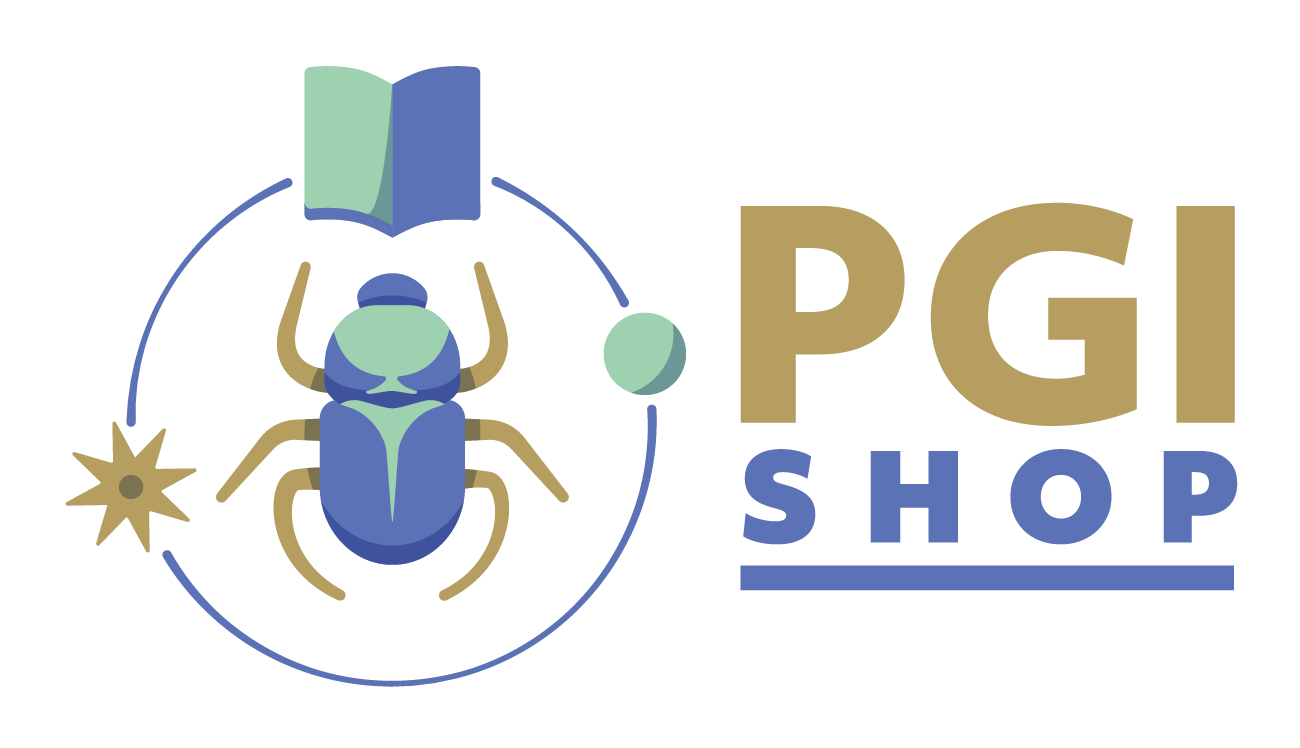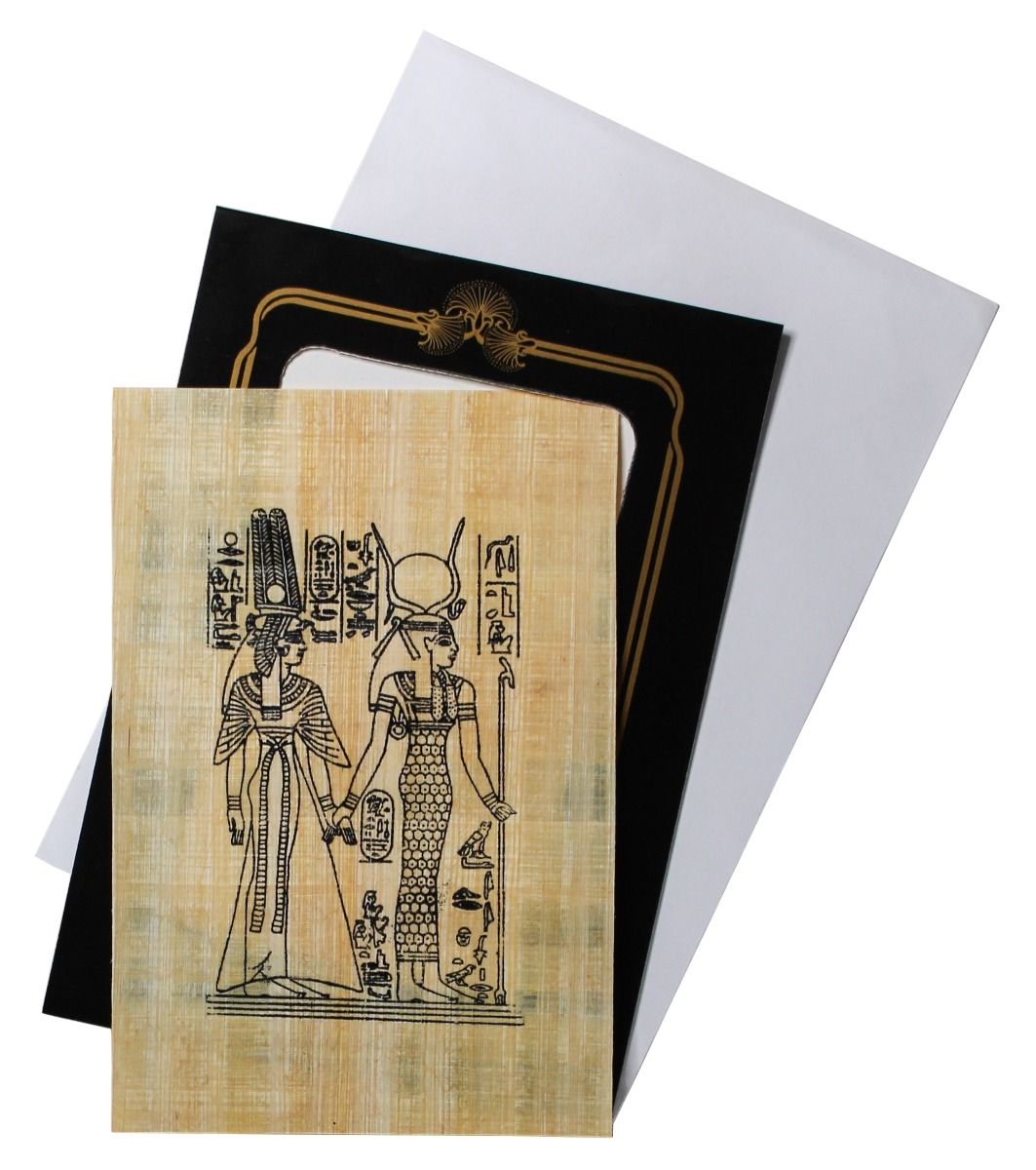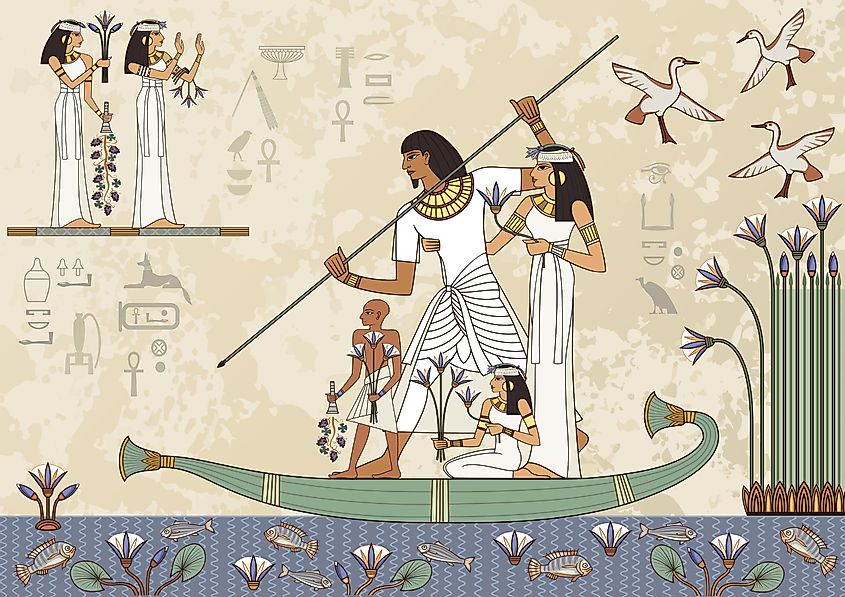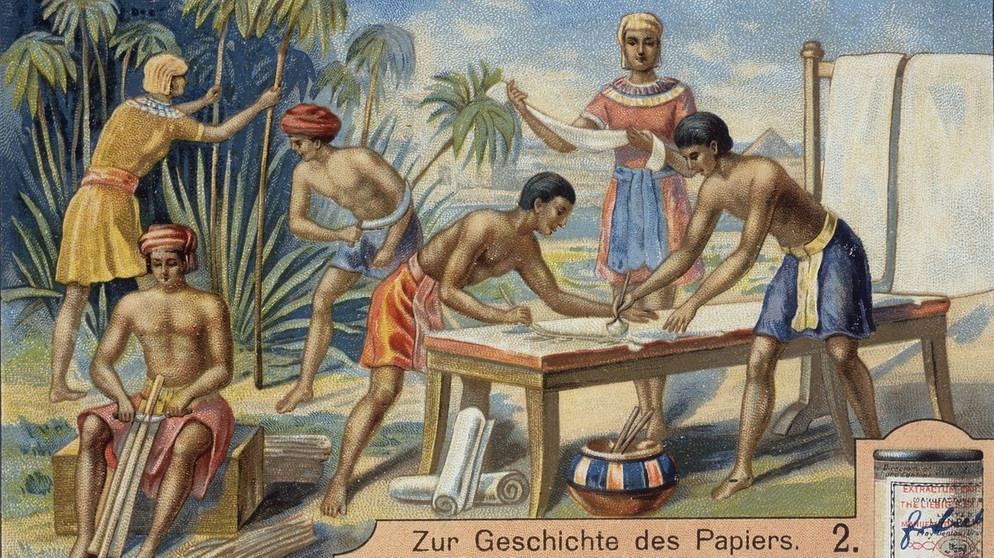Papyrus Mini-Gallery - Isis and Nefertari
Natural papyrus with outline motif 11.5 × 16.5 cm, black folding passepartout, writing paper and a hanging eyelet.
Mini gallery pictures are an inexpensive introduction to papyrus painting.
The ready-painted pictures are a tasteful gift for many occasions.
To the motif
The goddess Isis, who is very well known throughout Egypt, is always described as the patroness, guardian and protector of all beings who are suffering or in great distress.
To paint:
12 double fibre pencil - Article No. 2701
Pilot Pintor: White, Gold, Silver - Article No. 2703
PGI papyrus
made of hand laid papyrus, produced in Egypt
silkscreen motif, natural border
can be painted with pens and watercolours
| Aspiration scale: | Easy |
|---|---|
| Time Line: | 45 Min |
Isis and Nefertari
The goddess Isis, who is very well known throughout Egypt, is always described as the patroness, guardian and protector of all beings who are suffering or in great distress. For this reason, she was considered a motherly goddess, the goddess of recovery, protection and magic. According to the famous Osiris myth, Isis was also worshipped as a deity of the dead and as a supporter in the afterlife. The Egyptians were very concerned that they would lose their human abilities, such as seeing, speaking, hearing and thinking, when they entered the Otherworld. Isis was supposed to ward off any demons that were responsible for the loss of human abilities.
God Chepre was usually depicted as a scarab, more rarely as a human with a scarab for a head. His name means "the one who arose by himself", just as the Egyptians also believed that the sun arose anew from the earth every morning by itself. The connection to the scarab is that it lays its eggs in a dung ball and it seems that its young, like the primordial god himself, come into being without an act of procreation. The beetle pushes the dung ball in front of it like a ball, just as in depictions the scarab pushes the sun disc over the horizon in the morning. Chepre is also associated with resurrection symbolism. Moreover, he is only one of the three figures of Re. Harachte embodies the midday sun and Aton the evening sun.
Nefertari was already married to her husband "Ramses II" before ascending the throne, and the two already had several children together. In the burial chamber of the high priest Nebwenenef, Nefertari is depicted behind her husband in the so-called "appearance window" of the palace. In the following period, too, the queen repeatedly appears in scenes behind her husband, which is to be understood as an expression of her high position. Nefertari is mentioned for the last time in the 24th year of Ramses II's reign, at the dedication of the two temples of Abu Simbel, for which the ruling couple travelled specially to Nubia.




